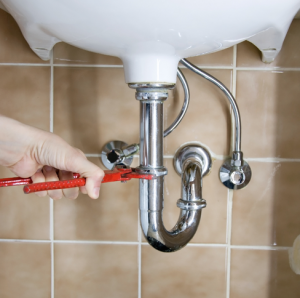
Maintainable seepage frameworks are an assortment of water the executives rehearse that expect to adjust current waste frameworks to regular water processes and are important for a bigger green foundation system. Bubbles endeavors make metropolitan waste frameworks more viable with parts of the normal water cycle, for example, storm flood spills over, soil permeation, and bio-filtration visit website . These endeavors desire to alleviate the impact human improvement has had or may have on the normal water cycle, especially surface overflow and water contamination patterns. Bubbles have become famous in ongoing a long time as how we might interpret what metropolitan improvement means for regular habitats, as well as our anxiety for environmental change and manageability, have expanded. Bubbles frequently utilize constructed parts that copy normal highlights to coordinate metropolitan seepage frameworks into the regular waste frameworks or a site as proficiently and rapidly as could be expected. Bubbles framework has turned into an enormous piece of the Blue-Green Urban communities showing the project in Newcastle-upon-Tyne.

History of Seepage framework
Seepage frameworks have been tracked down in antiquated urban communities more than 5,000 years of age, including Minoan, Indus, Persian, and Mesopotamian developments. These seepage frameworks zeroed in for the most part on diminishing annoyances from restricted flooding and wastewater. Simple frameworks produced using block or stone channels comprised the degree of metropolitan seepage innovations for a long time. Urban communities in Antiquated Rome additionally utilized waste frameworks to safeguard low-lying regions from an abundance of precipitation. At the point when manufacturers started building reservoir conduits to bring new water into urban communities, metropolitan waste frameworks became coordinated into a water supply foundation interestingly as a brought together metropolitan water cycle.
- Current framework
Current seepage frameworks didn’t show up until the nineteenth hundred years in Western Europe, albeit the vast majority of these frameworks were fundamentally worked to manage sewage issues emerging from quick urbanization. One such model is that of the London sewerage framework, which was built to battle the gigantic tainting of the Waterway Thames. At that point, the Waterway Thames was the essential part of London’s seepage framework, with human waste amassed in the waters neighboring the thickly populated metropolitan community. Thus, a few pandemics tormented London’s inhabitants and even individuals from Parliament, including occasions known as the 1854 Wide Road cholera flare-up and the Incomparable Smell of 1858. The worry for general well-being and personal satisfaction sent off a few drives, which at last prompted the production of London’s cutting-edge sewerage framework planned by Joseph Bazalgette.
- Past framework
In the past many years, as environmental change and metropolitan flooding have become progressively pressing difficulties, waste frameworks planned explicitly for ecological maintainability have become more well-known in both the scholarly world and practice. The primary supportable seepage framework to use a full administration train incorporating source control in the UK was the Oxford administration’s motorway station planned by Bubbles experts Robert Bawl Partners Initially the term Bubbles portrayed the UK’s way to deal with maintainable metropolitan waste frameworks. These advancements may not be in “metropolitan” regions, and accordingly, the “metropolitan” portion of Bubbles is presently generally dropped to diminish disarray.

